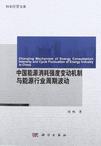中国能源消耗强度变动机制与能源行业周期波动
出版时间:2012-6 出版社:科学出版社 作者:刘畅 页数:219 字数:314250
内容概要
The monograph has an objective to make an interesting insight on security,trust and risk in DRM ecosystem from interdisciplinary perspective.The state-of-the-art of DRM technologies is firstly presented,and then the book proposed a tradeoff between DRM security and utility by cost-effectively adopting and deploying of security policies and mechanisms,in order to implement an optimal security-utility equilibrium and establish the multi-stakeholder trust in DRM ecosystem.And also,the book has an in-depth investigation on security risk management in the copyrighted contents value chain.Finally,a comprehensive multimedia DRM application case for digital home networks was highlighted.
This monograph is intended for research scientists,engineers,developers and high-level administrators of digital rights management ecosystems and applications,and also for advanced-level students in computer science,information technology and management science.
作者简介
Zhang Zhiyong,Ph.D in Computer Science,IEEE Senior Member,IEEE Consumer Electronics Society Member,IEEE Systems,Man,Cybermetics Society Technical Committee on Soft Computing(IEEE SMC TCSC),World Federation on Soft Computing Young Researchers Committee(WFSC YRC),China National Audio,Video,Multimedia System and Device Standardization Technologies Committeeman,and Associate Professor of Department of Computer Science at Henan University of Science and Technology,P.R.of China.His research interests focus on the areas of Digital Rights Management and soft computing on security applications,trusted computing and multimedia social networks.Recent years,Dr.Zhang has been attempting to explore"hard security"and"soft computing"methodologies to cope with these open issues and challenges,and published above 40 selected papers in the above fields.Besides,He sponsored numerous International Workshops/Sessions on Digital Rights Management and Multimedia Contents Security.
书籍目录
PrefaceChapter 1 Introduction1.1 DRM Backgrounds1.1.1 DRM Definitions1.1.2 A Generic Contents Value Chain Ecosystem1.1.3 Three Aspects of DRM Ecosystem1.2 State-of-The-Art DRM1.2.1 Cryptographic Security & Digital Watermarking1.2.2 Digital Rights Expression and Usage Control1.2.3 User Privacy Protection and Contents Security1.2.4 DRM Trust Models1.3 Research Motivation and Scope1.4 Monograph Outline1.5 ConclusionReferencesChapter 2 Enhanced Security Policies for DRM2.1 Fundamental Security Requirements in DRM2.2 Trusted Computing and Remote Attestation2.2.1 Trusted Computing Background2.2.2 Trusted Computing and Its Features2.2.3 Remote Attestation2.3 AP2 RA Model and Secure Protocol2.3.1 Privacy Protection and AP2 RA Model2.3.2 Security Protocol2.3.3 Analysis and Comparisons2.4 Trusted Computing-enabled Digital Rights Sharing2.4.1 Usage Control with Delegation Characteristics2.4.2 Fine-Grained Digital Rights Transfer Policy2.4.3 AP2RA-Based Contents Dissemination System2.4.4 Trusted Distribution on Transferable Rights2.5 Digital Rights Negotiation and Contents Security2.5.1 Transaction-Based Digital Rights Negotiation2.5.2 Contents Verification and Trusted Execution2.6 ConclusionReferencesChapter 3 Formalized DRM Security-Utility and Game-Theoretical Analysis3.1 Requirements for Trust in DRM3.1.1 Essential Trust Relations3.1.2 Conceptual Multi-Participant Trust Architecture3.2 Formalized Game-Theoretical Adoptions of Security Policies3.2.1 DRM Security Policies and Properties3.2.2 Non-Cooperative Game on Security Polices3.2.3 Cooperative Game on Security Polices3.3 Fuzzy Analytic Hierarchy Process on Utility-Factor Weights3.3.1 Analytic Hierarchy Process and Fuzzy Assessment3.3.2 Hierarchy Process Structure and Consistency Matrix3.3.3 FAHP-Based Weights Assessment3.4 ConclusionReferencesChapter 4 Basic Security-Utility and Game Analysis in Contents Acquisition Scenario4.1 DRM Typical Security Policies4.1.1 Typical Security Policy Set4.1.2 Security Policies Relativity4.2 Security Utility Analysis4.2.1 Payoff Functions of Security Policies Combinations4.2.2 Utility-Factors Weights Assessment and Calculation4.3 Non-Cooperative Game on Typical Policies Set4.3.1 A Non-Cooperative Game Model4.3.2 Nash Equilibriums and Conditions4.3.3 Swarm Simulations and Discussions4.4 Cooperative Game for Typical Policies4.4.1 Security Benefits Super-Additiontivity and Convexity4.4.2 Establishment of Multi-Participant Cooperation4.5 ConclusionReferencesChapter 5 Dynamic Mixed Game Analysis of Security Policies in Contents Sharing Scenario5.1 Rights Delegation and Transfer for Contents Sharing5.2 Dynamic and Mixed Game for Contents Sharing5.2.1 Rights Sharing Tree and DMG5.2.2 An Algorithm for DMG5.3 Swarm-Based Simulation Experiments5.3.1 Basic Simulation Environment and Procedure5.3.2 Simulations Experiments on Different Sharing Modes5.4 ConclusionReferencesChapter 6 DRM Risk Management6.1 Risk Utility of Security Policy6.1.1 Security Risk Management and Utility Category6.1.2 Pros and Cons of Qualitative and Quantitative Assessments6.1.3 An Analytic Approach to Risk-Controlled Utility6.2 Risk-Controlled Utility Analysis and Business Model6.2.1 Risk Utility of TC-Enabling Security Policy6.2.2 Sharing Modes and Maximum Benefits of Contents Purveyor6.2.3 Simulation Experiments6.2.4 Related Discussions and Business Model6.3 ConclusionReferencesChapter 7 DRM Application Case for Digital Home Network7.1 A DRM Usage Control Model for Digital Home Network7.1.1 Formalized Role-based,Cross-Domain Usage Control Model for DHN7.1.2 Visual Modeling of the RCDUCM for DHN7.1.3 An Application Case of the RCDUCM for DHN7.2 A Novel Approach to Digital Contents Sharing for Digital Home Network7.2.1 Background and Motivation7.2.2 Classification of Roles and Distribution of Permissions for DHN7.2.3 A Novel Approach to Digital Contents Sharing for DHN7.2.4 Analysis of Performance and Security7.3 A Novel DRM Security Scheme and Its Prototype System Implementation7.3.1 DRM System Architecture7.3.2 DRM System Security Mechanism7.3.3 Playback Control Based on Cryptography and License7.3.4 Implementation of DRM Prototype System7.4 ConclusionReferencesChapter 8 Further Works and Open Issue8.1 Further Works8.2 Trust Evaluation in Multimedia Social Network8.2.1 Introduction8.2.2 Advance on Trust Evaluation in Social Networks8.3 Open Issue and Topics8.4 ConclusionReferencesAppendix AAppendix BAcknowledgments
图书封面
评论、评分、阅读与下载
